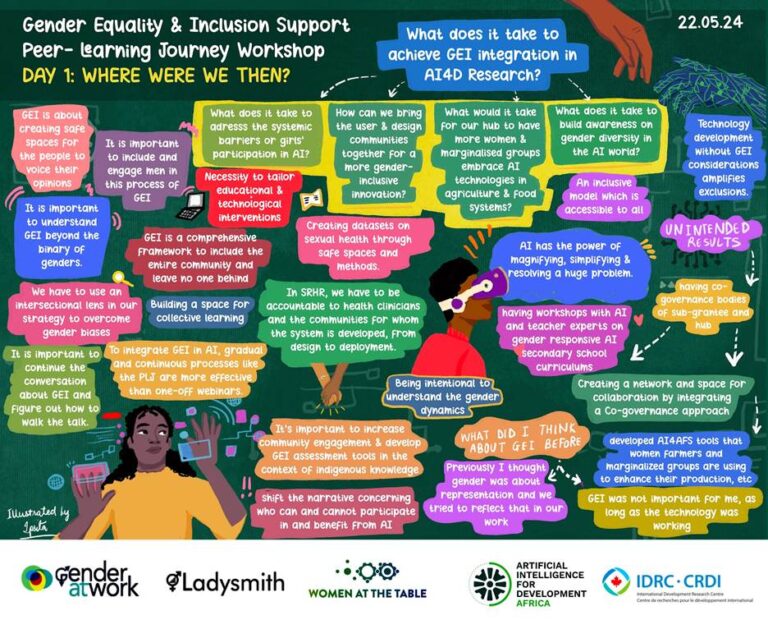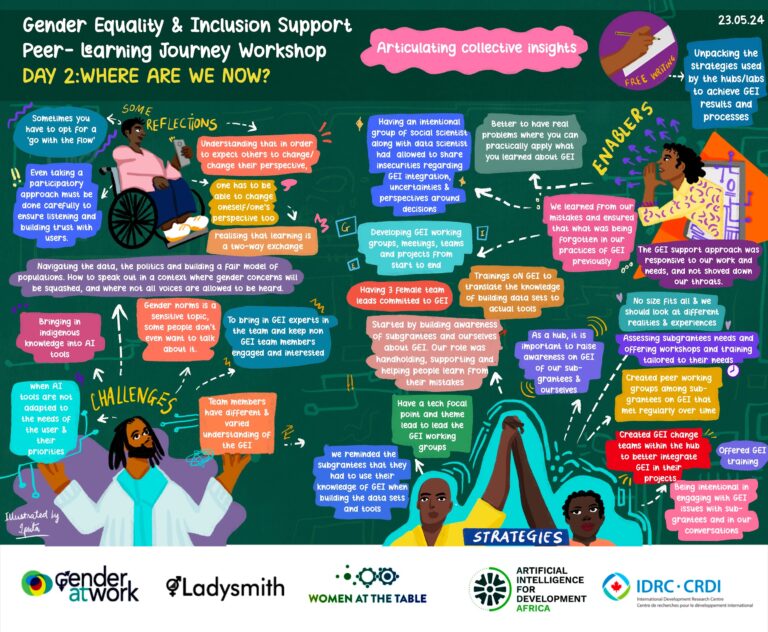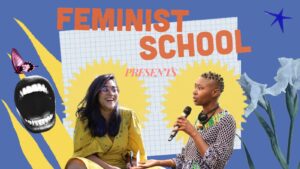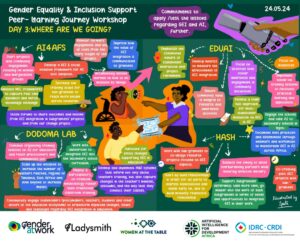The power of artificial intelligence (AI) seems to promise easy solutions to many intractable problems faced by organizations in the global South, whether their focus is medicine, public health, education, agriculture and food systems, or business.
While AI is a compelling tool for research, the reality of implementing AI fairly and equitably is more challenging. AI is a far more complex beast to tame and master, and comes with its own array of risks and potential pitfalls. In particular, an AI system does not always provide solutions that are unbiased and free from harm. Without care, algorithms and datasets run the risk of perpetuating the same inequalities and prejudices that social justice organizations are so dedicated to eradicating.
Background: Artificial Intelligence for Development Africa (AI4D)
Artificial Intelligence for Development Africa (AI4D) is a program that began in January, 2020, with the mission to “improve the quality of life for all in Africa and beyond by partnering with Africa’s science and policy communities to leverage AI through high-quality research, responsible innovation, and talent strengthening”.
Four of the projects funded within AI4D chose to participate in a two year learning process, starting in January 2022 and finishing in September 2024, focused on gender equality and inclusion (GEI), called the Peer Learning Journey (PLJ). The four partners had different but complementary goals:
- HASH (Hub for Artificial Intelligence in Maternal, Sexual and Reproductive Health): A multidisciplinary consortium of medical professionals, computer scientists, data scientists, social scientists and public health experts working to improve maternal, sexual and reproductive health in Sub-Saharan Africa by harnessing AI;
- EduAI Hub: A consortium of universities working to advance education by bringing together African Researchers and innovators of AI and education and supporting the design and development of high-quality research-based project calls in three thematic areas of inclusion, language and administration.
- Dodoma Lab (Africa’s Anglophone Multidisciplinary Research Lab): A multidisciplinary AI4D lab using AI to promote sustainable human development and economic advancement, and foster research, training, innovation, and internationalization.
- AI4AFS (Artificial Intelligence For Agriculture and Food Systems): An initiative to advance responsible homegrown AI research and innovations to tackle pressing challenges in agriculture and food systems in Africa.
AI4D committed to ensuring that these program partners, or “hubs” and “labs,” effectively integrate GEI considerations into their work to support responsible AI ecosystems. This involves advancing hubs and labs’ understanding of the gendered and intersectional impacts of the design, development and deployment of AI in their organizations, communities and the research they support. Each hub/lab embarked on its own “change project,” receiving assistance from the GEI Support Team, a AI4D technical partner which included Ladysmith (a feminist research consultancy), Women at the Table (a global civil society organization) and Gender at Work. The project was funded by the International Development Research Centre (IDRC) and the Swedish International Development Cooperation Agency (SIDA).
The guiding question
The guiding question for all the change projects in the PLJ process was, “What does it take to integrate gender equality and inclusion in AI for development research in Africa?”
The Peer Learning Journey comprises different processes, combining individual reflections, peer learning, tailored mentorship and resources, as illustrated in figure 1. The GEI Support Team (Ladysmith, Gender at Work and Women at the Table) provided a variety of opportunities for learning for a small cohort of individual hub and lab teams, selected in consultation with IDRC.
The process began with an exploratory self-assessment on GEI in their work, called Hearing our Stories (HoS), facilitated by a GEI support team member. The HoS workshop is not a typical gender training or self-evaluation. It is a series of short, facilitated, reflexive conversations using anti-oppression, feminist and social learning techniques, and examining personal and collective perspectives, questions and experiences of GEI as relevant to the work at hand. In the HoS workshop, participants also begin to think about what their “change project”[1] could look like, what they would like to explore further or do differently.
The PLJ also consisted of three on-line peer learning workshops, spread across two-years, to enhance learning on GEI across hub/lab teams. Between the peer learning workshops, participants also worked with mentors from the GEI Support team. The PLJ methodology built on nine years of Gender at Work-IDRC partnerships to support similar IDRC research programs. After COVID, the Gender Action Learning approach and responsive mentoring moved from in-person meetings to on-line.
The first peer learning workshop focused on building relationships and clarifying concepts, as well as the change projects, by using system analysis tools to identify root causes of the challenges being addressed. One resource was Gender at Work’s Analytical Framework.
The second peer workshop delved deeper into the systemic issues and inequalities the hubs and labs were trying to address, particularly using power analysis tools to make visible the different ways power is manifested to maintain the status quo of gender inequality. The third and last workshop focused on making both individual and collective lessons of the past two years visible—what was possible, what enabled them, as well as what were the limitations.

Key learnings from the final PLJ workshop
The third and final AI4D Peer-Learning Workshop, PLJ3, took place over three days in May, 2024. This workshop included multiple opportunities for discussion and connection, and a reflective ”writeshop,” facilitated by writing coach Ethan Gilsdorf. Creative writing invites people to connect their head with their heart to reflect upon and describe their learning over the two years. Key learnings emerged across the four hubs/labs as they reflected on their experiences in the first two PLJ workshops. Graphics for Day 1 and 2, below, illustrate the multiple learnings. The writing revealed that many participants experienced a three stage learning process.

Stage 1: The light goes on
Participants typically first described not knowing how important GEI was or how it needed to be integrated into their project. Many described the first “Hearing our Stories” session as their “Aha!” moment. Some reported confusion and even a certain reluctance or fatigue from past experiences of gender training, and presentations of foreign concepts without any time, space or tailored content for understanding the relevance to their everyday lives, roles as scientists and work in AI. Participants needed to find a language that made sense to them. The HoS allowed for this.
Here are some highlights from the participants’ reflections:
I wondered what techniques, skills or approaches would ensure that I applied a “gender lens” to the project. I cracked my head around these questions, and at one point, to be honest, I felt like I wasn't making any headway. This was not my area of expertise, and so, it gave me reasons to be anxious.
I perceived a prominent divide between gender experts and research scientists, with gender experts on one side and research scientists on the other side, separated by a big river but without a bridge to cross over. To make matters worse, the gender experts supposedly had no clue about the length and difficulty of the journey necessary for scientists to develop the technology to address GEI concerns. Would these two groups ever share the “same space” and read from the “same script”? When will the gender experts ever stop forcing things down others' throats? All these were my questions without answers.

Stage 2: The learning-by-doing process
During this stage, participants reflected on what happened during their project, which was for many, the first time they experimented with integrating GEI in their work. Participants explored what was significant, what they learned individually and what they learned as a hub/lab collectively.
A number of participants spoke of the surprises as they discovered how to work on the “social” side as well as the “technical side”. Participants also mentioned the on-going, iterative aspects of the learning process. Some examples of what participants wrote:
One of the most significant learnings for me has been the importance of co-creation. Collaborating closely with our stakeholders, we gained invaluable insights into their lived experiences, priorities, and perspectives. Our collaboration not only ensured that our AI solutions were tailored to their specific needs, such as real-time disease detection in crops, one of the top priority needs of our stakeholders. Co-creation also fostered a sense of ownership and trust among the communities we worked with.
We needed reminders, and more reminders, that GEI must be included and then prompts along the journey of awareness, “Oh no, how?” To the step where the thinking needs to translate into actual building these ideas, concepts, understandings into the actual models. Strategies we used: hand holding, talking, asking questions, seeing where mistakes and omissions bring us. On a personal level, the concepts, the wide and deep thinking were one thing, but the translation to projects is harder, multi-layered, and just as interesting.
Our hub started the change journey with a GEI needs assessment meeting with our sub grantees. As they gave presentations about their GEI needs, I felt a light shine on me. Working together with our sub grantees to co-create solutions to the GEI needs identified, with the goal of increasing community gender inclusion awareness and integrating inclusive AI designs in education, was a particularly insightful process for me.
Stage 3: Future intentions, big ideas
In this stage, participants reflected on what they planned to take forward from their learning about GEI in AI4D research, and what that process might be. Participants also imagined a future in which they not only worked differently but created different types of structures that would lead to a more just AI.
As our project draws to a close, I have learned that one of the keys to practicing GEI is putting yourself in the shoes of another. Only then do concepts like ethics, intersectionality and bias come to life. There are so many things we never see or think about when we only see things through our own myopic lens. It has been quite a journey. I now have more to say but there is still more to learn.
My journey helped me to realize how passionate I am to effect system change. My journey eventually turned me into a GEI advocate who sees marginalization and says something about it.
Ultimately, my vision is to create a research team where diverse voices are not only heard but actively shape the direction and outcomes of our work. By embracing GEI as a fundamental value, we can harness the full potential of AI to create a more just, equitable, and sustainable future for all.
Introducing the blog series: “Keeping the light on: Reflections on GEI and AI in Africa”
Over the coming weeks, longer reflections from participants in Artificial Intelligence for Development Africa (AI4D) will be posted in this space, as part of the series “Keeping the light on: Reflections on GEI and AI in Africa”.
This series of personal, professional and collective journeys demonstrate the value of intentionally reflecting on and experimenting with what GEI integration means to a team, organization and AI driven research.
We learn about the value of multidisciplinary collaboration, exchange, storytelling and learning-by-doing on GEI. What emerged from these four hubs and labs are innovative participatory user-centered approaches in AI which do no harm and enable the most marginalized to improve their own lives. The stories demonstrate that an openness to question our own gender and social biases, learning from each other, and willingness to experiment can lead to AI innovations and policies that benefit everyone in a community.
[1] A “change project” is what the hub or lab chooses to work on with the accompaniment of the GEI support team. This varies from testing a different approach to achieve their GEI intentions, to implementing concrete initiatives aimed at tackling the identified obstacles to their goals. Throughout implementation of the change project, hubs and labs are supported to adopt an action-learning approach to their work.
This introductory blog post was written and edited by Ethan Gilsdorf, David Kelleher, Khanysa E. Mabyeka, Lucía Mesa Vélez and Marie-Kate Waller. This work is openly licensed via CC BY 4.0.
We launch the series with a blog called “How Design by Inclusion Changed My Perspective of GEI“ by Daisy Salifu, a biostatistician, who reflects on her own “aha moments” finding meaning and relevance of GEI in her own AI work in the agriculture and food systems field. She worked with her hub to co-develop AI tools with women farmers and people with disabilities in Uganda and Nigeria. Watch this space for more reflections in the “Keeping the light on: Reflections on GEI and AI in Africa” series. We hope you enjoy this series and welcome your thoughts and feedback.



